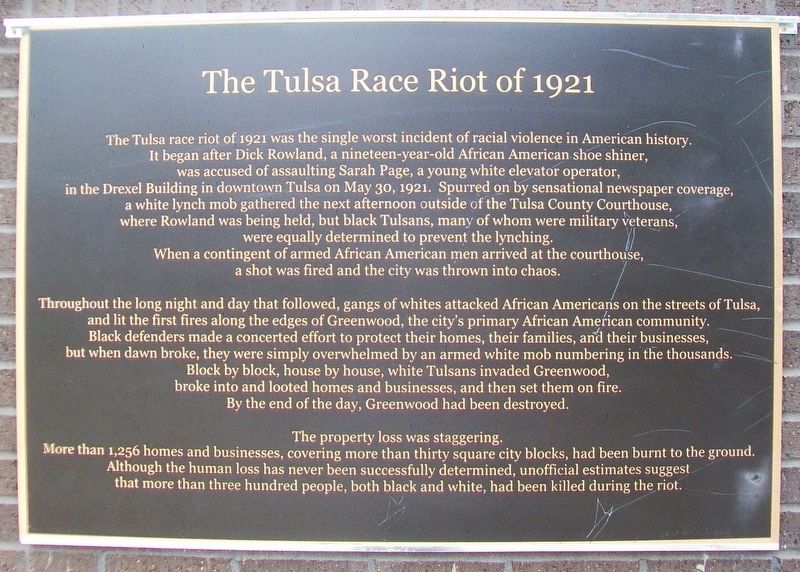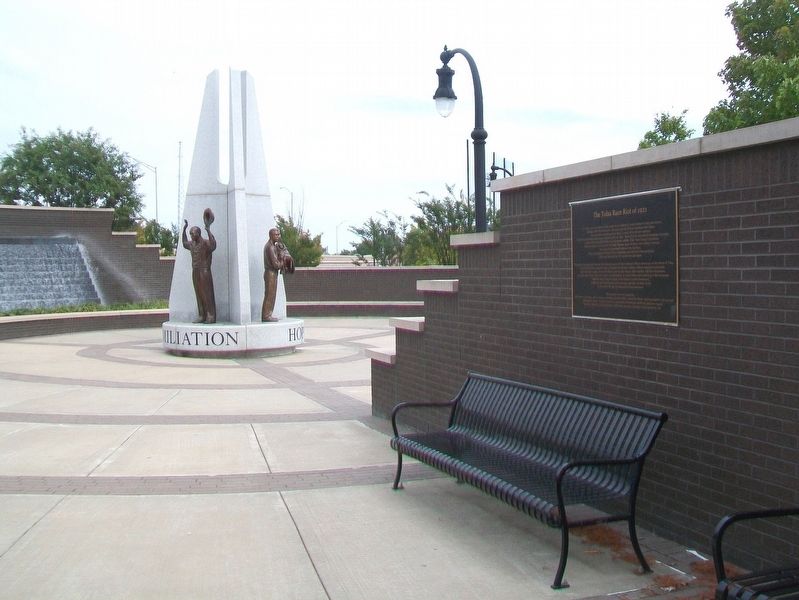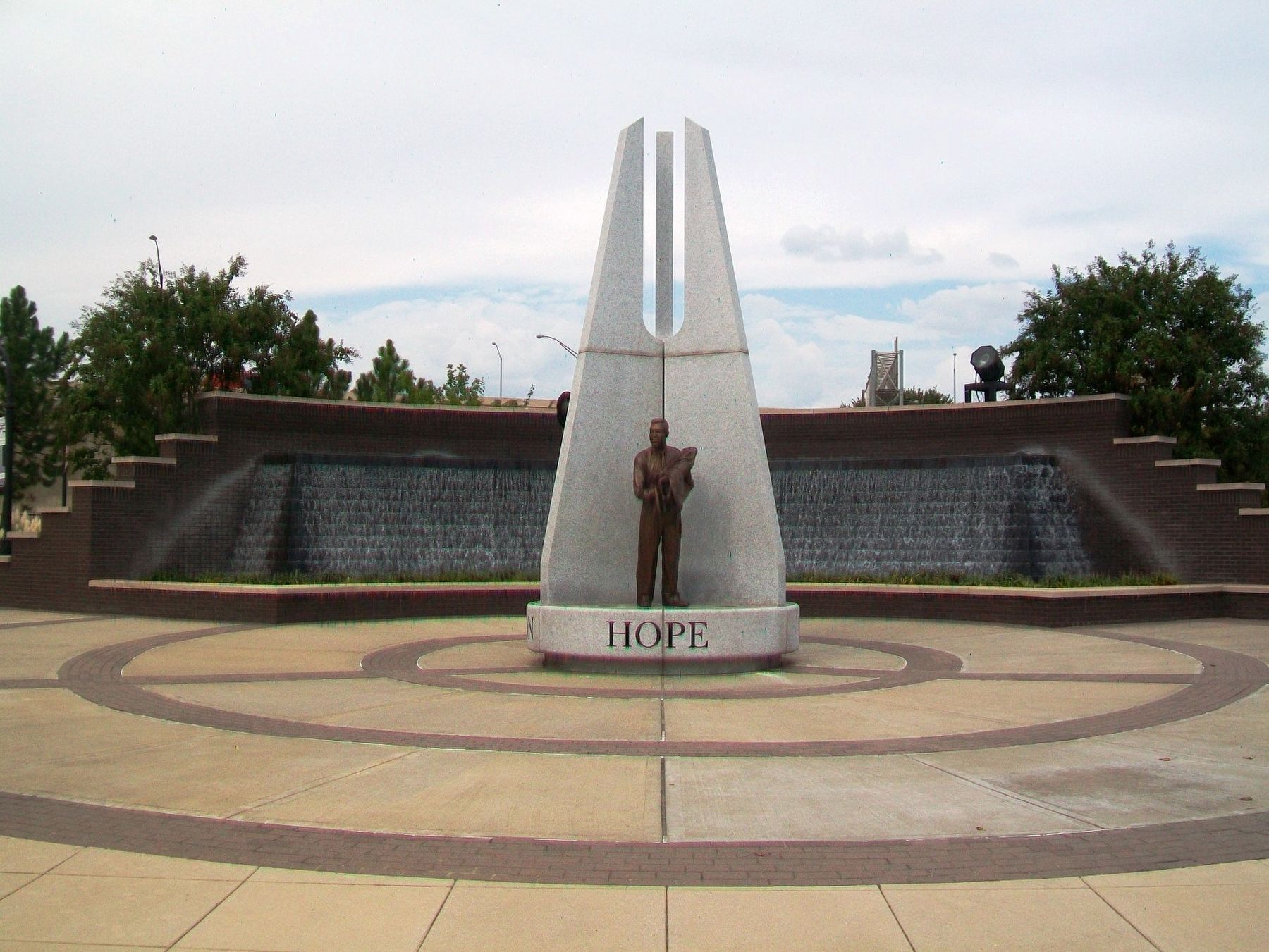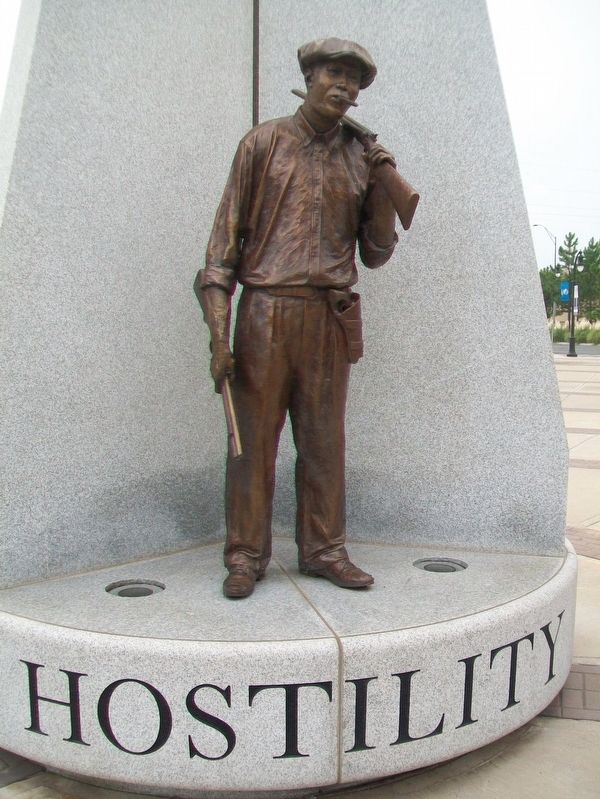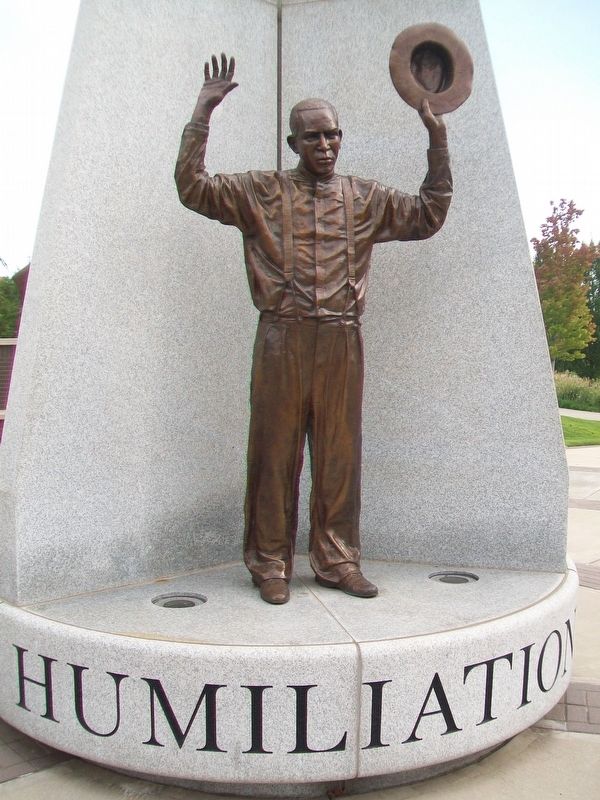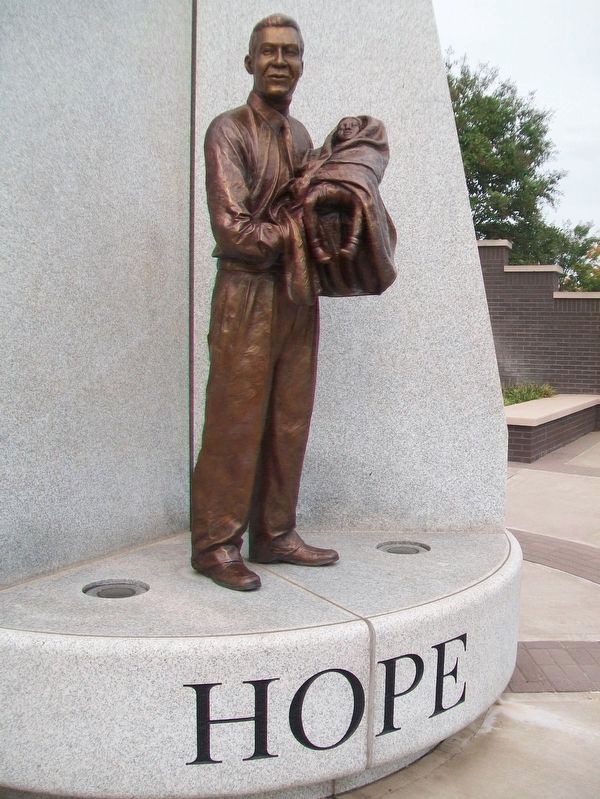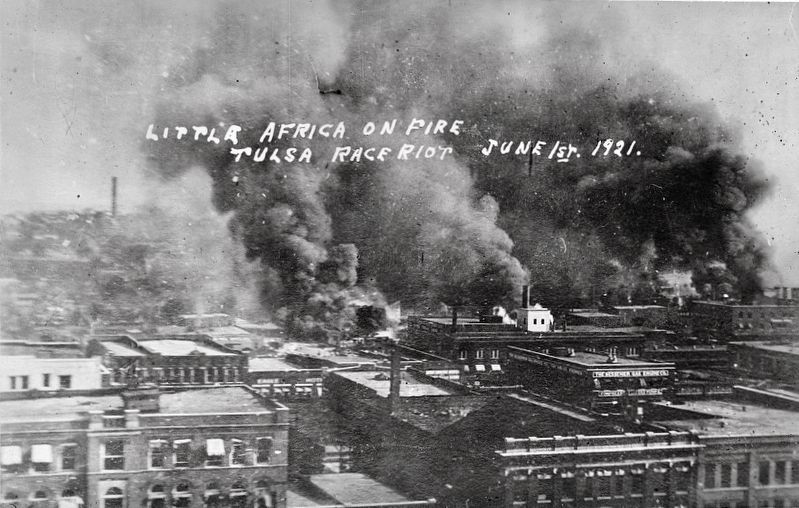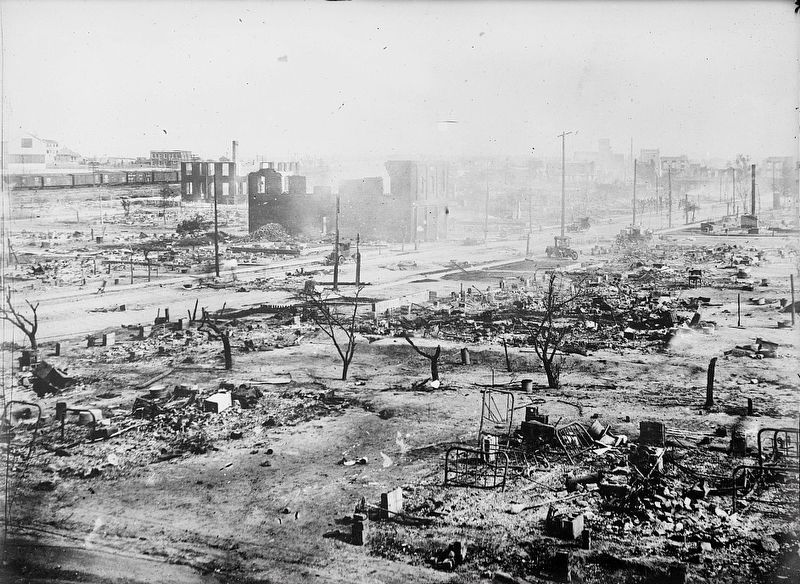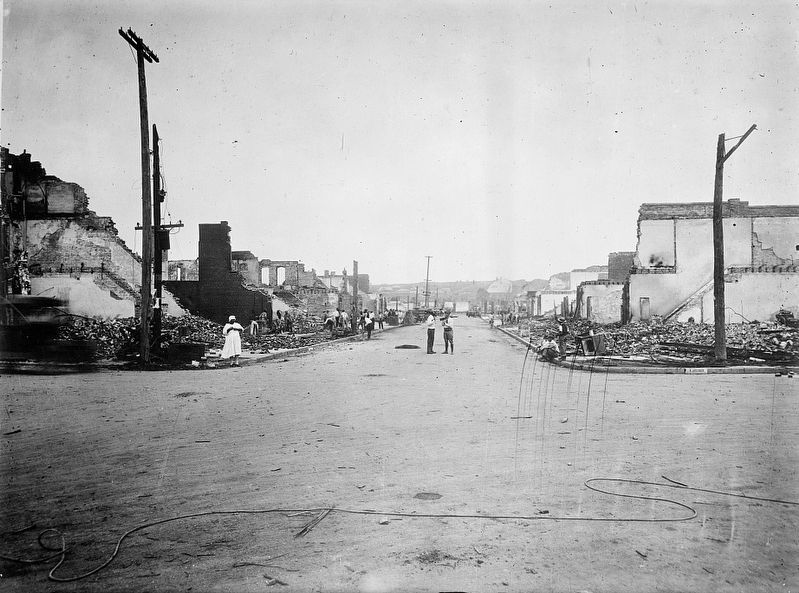Greenwood District in Tulsa in Tulsa County, Oklahoma — The American South (West South Central)
The Tulsa Race Riot of 1921
The Tulsa race riot of 1921 was the single worst incident of racial violence in American history. It began after Dick Rowland, a nineteen-year-old African American shoe shiner, was accused of assaulting Sarah Page, a young white elevator operator, in the Drexel Building in downtown Tulsa on May 30, 1921. Spurred on by sensational newspaper coverage, a white lynch mob gathered the next afternoon outside of the Tulsa County Courthouse, where Rowland was being held, but black Tulsans, many of whom were military veterans, were equally determined to prevent the lynching. When a contingent of armed African American men arrived at the courthouse, a shot was fired and the city was thrown into chaos.
Throughout the long night and day that followed, gangs of whites attacked African Americans on the streets of Tulsa, and lit the first fires along the edges of Greenwood, the city's primary African American community. Black defenders made a concerted effort to protect their homes, their families, and their businesses, but when dawn broke, they were simply overwhelmed by an armed white mob numbering in the thousands. Block by block, house by house, white Tulsans invaded Greenwood, broke into and looted homes and businesses, and then set them on fire. By the end of the day, Greenwood had been destroyed.
The property loss was staggering. More than 1,256 homes and businesses, covering more than thirty square city blocks, had been burnt to the ground. Although the human loss has never been successfully determined, unofficial estimates suggest that more than three hundred people, both black and white, had been killed during the riot.
Erected 2010 by Concerned Citizens and Organizations, the City of Tulsa, and the Oklahoma State Legislature.
Topics. This historical marker is listed in these topic lists: African Americans • Civil Rights • Disasters • Law Enforcement. A significant historical date for this entry is May 30, 1921.
Location. 36° 9.676′ N, 95° 59.412′ W. Marker is in Tulsa, Oklahoma, in Tulsa County. It is in the Greenwood District. Marker is on Elgin Avenue north of Mathew B. Brady Street, on the left when traveling north. Marker and Hope Plaza are in John Hope Franklin Reconciliation Park. Touch for map. Marker is at or near this postal address: 321 North Detroit Avenue, Tulsa OK 74103, United States of America. Touch for directions.
Other nearby markers. At least 8 other markers are within walking distance of this marker. Tower of Reconciliation and Healing Walkway (within shouting distance of this marker); John Hope Franklin Reconciliation Park (within shouting distance of this marker); Mt. Zion Baptist Church (about 500 feet away, measured in a direct line); Mabel B. Little Heritage House
(approx. 0.2 miles away); Black Wall Street - 1921 (approx. 0.2 miles away); Booker T. Washington High School (approx. 0.2 miles away); Lynching in America / The 1921 Tulsa Massacre (approx. 0.2 miles away); Vernon A.M.E. Church (approx. 0.2 miles away). Touch for a list and map of all markers in Tulsa.
Also see . . .
1. Tulsa Race Riot. (Submitted on December 17, 2017, by William Fischer, Jr. of Scranton, Pennsylvania.)
2. John Hope Franklin Reconciliation Park. (Submitted on December 17, 2017, by William Fischer, Jr. of Scranton, Pennsylvania.)
3. 2001 Oklahoma Commission to Study the Tulsa Race Riot of 1921. (Submitted on December 17, 2017, by William Fischer, Jr. of Scranton, Pennsylvania.)
Credits. This page was last revised on March 25, 2024. It was originally submitted on December 17, 2017, by William Fischer, Jr. of Scranton, Pennsylvania. This page has been viewed 1,010 times since then and 52 times this year. Photos: 1, 2, 3, 4, 5, 6. submitted on December 17, 2017, by William Fischer, Jr. of Scranton, Pennsylvania. 7, 8, 9. submitted on December 19, 2017.
